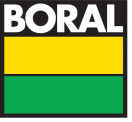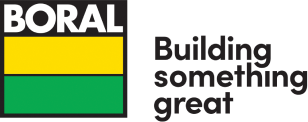Boral concrete operates a nationwide network of ‘batching’ plants to produce ‘pre-mixed’ concrete for use in all forms of building and construction.
Each batching plant combines a number of components produced by other Boral businesses to produce the concrete.
Boral Concrete holds Quality Management System certification to ISO 9001:2015 for its operations.
What is Concrete?
Concrete is composed of aggregates (crushed rock and sand) bonded together with ‘cementitious’ binders (cement) and water, which then hardens over time once laid in place. Generally coarse gravel or crushed rocks from Boral Quarries, along with finer materials such as sand, provide the required aggregate component. Cement is sourced from Boral’s Cement business.
What is Concrete used for?
Being one of the most versatile building materials, concrete is used in many forms of construction in Australia. Concrete can be used in residential driveways, house foundations, walls, as well as in major infrastructure, including for the foundations of high rise buildings, lift shafts and major roads. Filling pre-made moulds with concrete is referred to as ‘pre-cast’. Pre-cast concrete has a large number of applications, including tunneling and bridge segments.
How is concrete made?
Concrete production is the process of combining water, aggregates, cementitious binders and additives. These different ‘ingredients’ are mixed at a specialised facility known as a ‘batching’ plant. A batching plant consists of large storage silos for the various reactive components like cement, and bulk ingredients like aggregates and water.
The plants also feature mechanisms for the addition of various additives, machinery to accurately weigh, move, and mix some or all of those ingredients, and facilities to load the mixed concrete, often into a concrete ‘agitator’ (truck). Depending on the proposed application of the final product, additional additives to the concrete can include mixers, heaters, chillers, colour additives and so on. Concrete production is time-sensitive. Once the ingredients are mixed, workers must put the concrete in place before it hardens.
Are there different types of Concrete Plants?
Concrete batching plants can be ‘mobile’ or ‘fixed’. Certain batch plant designs may be considered mobile, but not necessarily easy to set up and tear down. A ‘fixed’ concrete batching plant is set up to remain in place for a long period of time (up to decades), and cannot be relocated. A ‘mobile’ concrete batching plant allows the user to batch concrete at most any location then move to another location. These are generally used for temporary project specific work, as the plant can be located near to the job site.

What is noticeable about a Concrete Plant?
All of Boral’s concrete plants have specific operating hours to be adhered to for the benefit of those who live near our operations. These hours are different across our sites.
There may be occasions when a concrete batching plant will request authorities to allow operations at different hours due to the need to provide concrete for a particular project. These hours are usually temporary and only apply during a specific period of time.
Boral’s concrete plants include a mix of noise mitigation strategies such as sound attenuation walls, one-way truck traffic systems to avoid the excessive use of reversing beepers, and noise-reducing additions to the plant and equipment. Concrete production can create dust and water run-off due to the nature of the products involved. All Boral sites require a range of mitigation strategies to avoid these having any effects on neighbours or local waterways. Conditions may be stipulated in planning permissions issued by authorities and enforced via the various state environment protection agencies.
Dust management may include ventilation and dust collectors on trucks, mixers and silos, as well as physical structures including walls or sheds to cover stockpiles, plant and equipment. The set up available to each plant will differ depending on the age of the equipment and other site-specific arrangements. Similarly, water run-off management may be managed in different ways at each site. The overall aim, however, is to avoid any contaminated water entering the local stormwater system.
Water is used for two main purposes at a concrete plant - to mix with the dry products to create concrete, and to clean, or ‘wash out’ the concrete equipment. The objectives for water used in the concrete wash out process are to collect and retain all washout water and solids in holding pits, preventing this caustic material from reaching soil and migrating to surface of ground waters. Where this is not possible, there are a number of methods to treat and release water into the site’s stormwater infrastructure. These include triple ‘interception’ pits, dosing to reduce pH, or C02 treatment.

